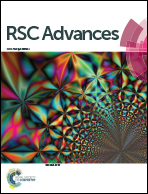Investigating the first hyperpolarizability of liquid carbon tetrachloride
Abstract
Sequential QMMM calculations have been carried out to investigate the first hyperpolarizability (βHRS,Liq) of liquid CCl4. First, Monte Carlo simulations are performed to generate statistically uncorrelated snapshots representing the liquid structure. Then, the first hyperpolarizability of selected snapshots are evaluated using ab initio calculations. In these calculations the solvent effects are described either exclusively by point charges or a few neighboring CCl4 molecules are also explicitly considered. In particular, it has been observed that considering small numbers of CCl4 molecules, embedded in point charges, enables monitoring the emergence of the dipolar contribution to βHRS,Liq and the increase of the depolarization ratio, confirming experimental results and substantiating that the dipolar contributions originate from intermolecular interactions between the CCl4 molecules. Additional calculations using semi-empirical Hamiltonians for the QM part were performed on systems containing explicitly one or two solvation shells, and further confirmed the emergence of the dipolar contribution in liquid CCl4.


 Please wait while we load your content...
Please wait while we load your content...